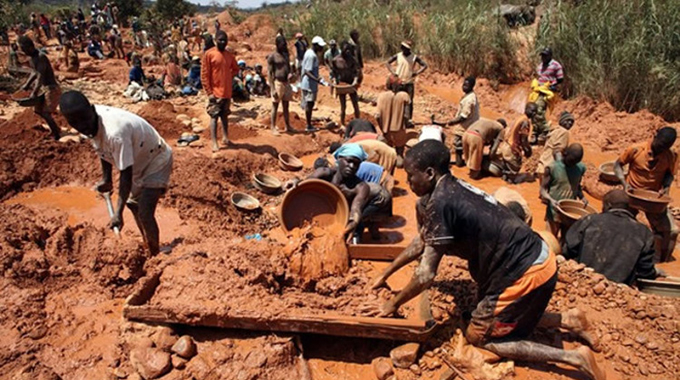Blanket Mine gold output rises marginally

Tawanda Musarurwa
Gwanda-based gold producer Blanket Gold Mine’s production in the second quarter of this year was 12 657 ounces, marginally up from 12 521oz in the prior comparable period.
Output for the first half of 2018 amounted to 25 582oz.
Caledonia said the cost of production was also slightly higher, with the all-sustaining cost at $856 per ounce in the second quarter, from $855, while the average realised price for the quarter stood at $1 278 from $1 235 in the comparative quarter.
Gross profit amounted to $5,14 million, up from $5,03 million, and net profit attributable to shareholders rose by 275 percent to $2,6 million from $694 million.
Earnings per share rose by a significant 86 percent to 35,2 cents, from 18,9 cents.
Management has said production in the second quarter is “in-line with expectations”.
Alternative Investment Market (AIM)-listed Caledonia Mining Corporation owns a 49 percent stake in the Blanket Gold Mine, but has since indicated plans to boost its ownership of its flagship mine to at least 80 percent.
Caledonia management said the marginal rise in output came despite a difficult operational circumstances as production was adversely affected by lower than planned tonnes and grade.
“The second quarter of 2018 was a difficult quarter for the business as production was adversely affected by lower than expected grade and tonnes mined.
“Production of 12,657 ounces was marginally higher than the second quarter of 2017 and in line with our expectations for our 2018 guidance range of 55 000-59 000 ounces,” said CEO Steve Curtis.
“We experienced significant negative working capital movements during the quarter which had an adverse effect on operating cash flow with a net operating cash burn of $1,2 million during the quarter.
“This, combined with capital investment of $5,6 million during the quarter, had a negative impact on the balance sheet with a net cash balance of $5,3 million at the end of the quarter.
“Underlying cash flows remained robust: pre-tax operating cash-flows in the quarter before working capital movements were $6,3 million, compared to $7 million in the first quarter of 2018 and $4,9 million in the second quarter of 2017.”
The CEO said capital investment during the period under review was in line with targets, but added that the group expects capital expenditure to decline after FY2019.
“Capital investment for the quarter was in line with our capex plan for 2018 at $5,6 million, most of which was incurred at Central Shaft, which has now reached a depth of 1 106 metres.
“We expect capex to decline substantially after 2019 after we commission the Central Shaft as planned in 2020.
“The Central Shaft project is the key enabler of longer term value for our shareholders as we progress towards our production and cost targets by 2021,” said Mr Curtis.









Comments